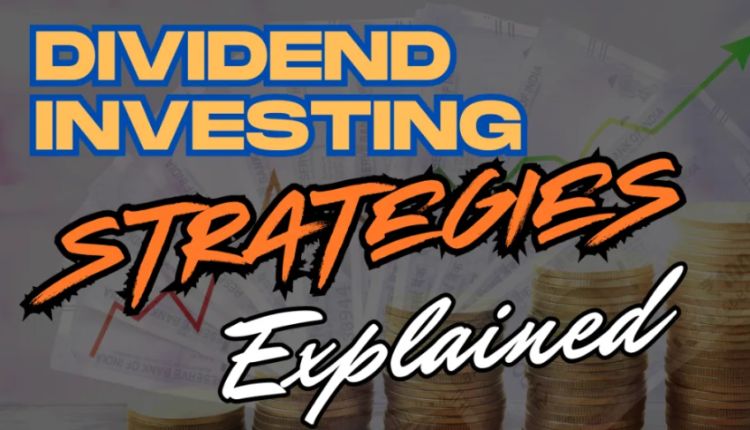Beginner-Friendly Dividend Investing Strategies: How to Earn Passive Income

In the world of investing, few strategies are as appealing — or as misunderstood — as dividend investing. For beginners, the idea of getting paid just for owning a stock can feel almost too good to be true. Yet, with the right approach, dividend investing can be a smart and relatively stable way to build passive income, grow your portfolio, and improve your financial security over time.
This guide explores beginner-friendly dividend investing strategies to help you start your journey confidently and wisely.
What Is Dividend Investing?
Dividend investing is a strategy focused on purchasing stocks that regularly pay out a portion of the company’s profits to shareholders — known as dividends with norraco transact. These payouts are typically made quarterly and can be taken as cash or reinvested into more shares of the stock.
For investors, dividends provide:
- A steady stream of income
- The potential for long-term capital growth
- Lower portfolio volatility compared to non-dividend stocks
Companies that pay dividends are often well-established, financially stable, and more resistant to economic downturns — think Coca-Cola, Johnson & Johnson, and Procter & Gamble.
Why Dividend Investing Is Great for Beginners
There are several reasons why dividend investing is ideal for those new to the stock market:
- Passive income: You earn money without having to sell your investments.
- Compounding effect: Reinvesting dividends accelerates portfolio growth.
- Lower risk: Dividend-paying stocks are often less volatile.
- Simplicity: Fewer trades and less speculation compared to growth investing.
Let’s look at some beginner-friendly strategies to get started.
1. Start with Dividend Aristocrats
If you’re new to investing, consider beginning with Dividend Aristocrats — companies in the S&P 500 that have increased their dividends for at least 25 consecutive years.
These companies are reliable, financially sound, and committed to rewarding shareholders. Examples include:
- Coca-Cola (KO)
- PepsiCo (PEP)
- Johnson & Johnson (JNJ)
- McDonald’s (MCD)
These aren’t high-flying tech stocks, but they’re stable, time-tested dividend payers ideal for long-term investing.
2. Use Dividend ETFs for Instant Diversification
Exchange-Traded Funds (ETFs) allow you to invest in a basket of dividend-paying stocks with one purchase. This is great for beginners who want diversification without having to research individual companies.
Popular dividend ETFs include:
- Vanguard Dividend Appreciation ETF (VIG)
- iShares Select Dividend ETF (DVY)
- Schwab U.S. Dividend Equity ETF (SCHD)
ETFs typically offer lower risk through diversification and are often passively managed, which keeps fees low.
3. Look at Dividend Yield and Payout Ratio
Before buying any dividend stock, evaluate these two key metrics:
- Dividend Yield: This is the percentage return based on the current stock price. For example, if a stock pays a $4 dividend annually and its price is $100, the yield is 4%.
- Payout Ratio: This shows how much of a company’s earnings are paid out as dividends. A lower payout ratio (e.g., under 60%) suggests the dividend is sustainable.
Avoid chasing high-yield stocks with extremely high payout ratios — they often signal financial instability or risk of dividend cuts.
4. Reinvest Dividends Automatically
Use a Dividend Reinvestment Plan (DRIP) or enable automatic reinvestment in your brokerage account. Instead of taking cash, your dividends will buy more shares of the same stock, compounding your returns over time.
For example, if you own 10 shares of a company that pays $1 per share annually, you’ll earn $10. With DRIP, that $10 is used to purchase more shares — which then also earn dividends.
This snowball effect can significantly boost your investment over the long term, especially when combined with consistent contributions.
5. Stay Consistent and Think Long-Term
Dividend investing is a marathon, not a sprint. It’s not about timing the market, but time in the market. Begin with a small amount, make regular contributions, and reinvest your dividends.
Over time, your income will grow, and so will your portfolio value.
6. Watch Out for Dividend Traps
A dividend trap is when a company offers an unusually high dividend yield, but the payout is unsustainable. The stock price might be falling, and the company may be in trouble — leading to a dividend cut or elimination.
Red flags include:
- Payout ratios above 100%
- Declining revenues or profits
- Debt-heavy balance sheets
- A history of recent dividend cuts
Stick with quality companies and do your homework before buying.
7. Use Tax-Advantaged Accounts
To maximize your dividend income, consider investing through tax-advantaged accounts like:
- Roth IRA: Dividends grow tax-free and can be withdrawn tax-free in retirement.
- Traditional IRA or 401(k): Taxes are deferred until withdrawal and explore more.
- Taxable accounts: You may owe taxes annually on qualified dividends, but some investors prefer this for liquidity.
For U.S. investors, qualified dividends (from most U.S. companies held over 60 days) are taxed at a lower rate than regular income — a key benefit to understand.
Sample Portfolio for Beginners (Hypothetical)
| Asset | Type | Dividend Yield | Allocation |
| VIG – Vanguard Dividend ETF | ETF | ~2.0% | 40% |
| JNJ – Johnson & Johnson | Stock | ~3.2% | 20% |
| KO – Coca-Cola | Stock | ~3.1% | 15% |
| SCHD – Schwab Dividend ETF | ETF | ~3.5% | 25% |
This example combines stable individual stocks with diversified ETFs, offering a solid foundation for beginners.
Final Thoughts
Dividend investing doesn’t have to be complex. With the right approach, beginners can build a reliable, growing stream of passive income that compounds over time. Start with quality companies, diversify through ETFs, reinvest dividends, and be patient.
Whether you’re investing for early retirement, financial freedom, or just to beat inflation, dividend investing offers a beginner-friendly path to long-term wealth.
Start small, stay consistent, and let your money work for you — one dividend at a time.




